“The intelligent investor is a realist who sells to the optimist and buys from the pessimist”
Benjamin Graham
Throughout our lives we all experience grief, which may have a variety of causes, one being events, such as the COVID-19 pandemic we are currently experiencing. In 1969, Elisabeth Kubler-Ross described the five stages of grief as: Denial, Anger, Bargaining, Depression, and Acceptance. As we work through these stages, we should also recognize that the stock market also follows stages when dealing with a crisis.
The first is what I refer to as the “reaction” phase. This occurs once the event is known and people, or more commonly today computers, react quickly to either buy or sell, no fundamental research is done in this phase.
Next comes the “liquidity” or “margin call” phase with further selling exasperating the effects of the 1st stage as portfolios or people that are highly levered are forced to sell. The last stage is the “fundamental stage” when investors have reached acceptance of the event and start to evaluate action with fundamental analysis to evaluate further risks and new opportunities that have emerged. The key question today those investors are asking is how long and deep will the economic slowdown be?
The recession that may be caused by the COVID-19 crisis will not be a typical recession based on a normal economic cycle. The typical economic cycle goes into a recession after a period of excessive investment. This period of over-investment pulls demand forward, is usually generated by excessive levels of credit, and creates an inflationary risk that central banks need to tame. Today the global economy has excessive levels of credit, but no over investment, and no inflationary pressures. The recession we may experience in 2020 falls under the category of “event-driven”. The two events driving the economic slow-down are primarily the COVID-19 crisis, and to a lesser extent locally the oil price war between OPEC and Russia. A growth scare, as we experienced in the fall of 2018, is not a recession. We will have slowing growth, a growth scare, but will it be a recession (two consecutive quarters of negative GDP growth) and what have markets already priced in? Further, simply meeting the technical definition of a recession is only part of the answer, the length and magnitude is relevant to a market recovery, and for insight into these factors we can look to historical examples.
The data contained in the table and chart below can provide some context. According to the National Bureau of Economic Research (NBER), the US economy has experienced 6 recessions since the 1970s. In these recessions, the stock market has corrected on average – 33.5%. Since the S&P 500 has already corrected close to – 30% in the last three weeks, we could make the case that a recession of an extended period is priced into the market.
| Recession | *NBER Dates of Recession | Market correction dates | Duration in Months | Percent decline |
| A | Nov 73 to Mar 75 | Oct 73 to Dec 74 | 14 | 40.5 |
| B | Jan 80 to Jul 80 | Feb 80 to Mar 80 | 1 | 16.9 |
| C | Jul 81 to Nov 82 | Jun 81 to Jul 82 | 13 | 20.1 |
| D | Jul 90 to Mar 91 | Jul 90 to Oct 90 | 3 | 19.8 |
| E | Mar 01 to Nov 01 | Sep 00 to Mar 03 | 30 | 47.3 |
| F | Dec 07 to Jun 09 | Oct 07 to Mar 09 | 17 | 56.4 |
| Average | 13 | 33.5 |
Source: National Bureau of Economic Research (US)

Referring to the data in the next table, we examine those market events since the 1950s with a drawdown of – 20% or more. We ask the question; how long did it take for the market to retest the old highs? On average it took 24 months. However, for insight on an event driven scenario, we can look to the recent correction in 2018. The events that caused the growth scare were primarily the Federal Reserve raising interest rates and reducing its balance sheet, in addition to the ongoing trade negotiations between the US and China. It that event-driven growth scare we experienced a rapid drawdown followed by a rapid retest of the old high once the events were mitigated, primarily from a reversal in Federal Reserve policy.
History of 20% or Greater Declines in the S&P 500 (US Equity)
| Date of Bottom | Percent Drawdown | Duration of Drawdown | Recovery to old high |
| 10-22-1957 | 20.3 | 3 months | 10 months |
| 06-26-1962 | 27.9 | 6 months | 14 months |
| 10-07-1966 | 22.2 | 7 months | 6 months |
| 05-26-1970 | 36.1 | 17 months | 20 months |
| 10-03-1974 | 48.2 | 20 months | 66 months |
| 08-12-1982 | 27.1 | 20 months | 2.5 months |
| 10-19-1987 | 33.2 | 2 months | 20 months |
| 10-19-2002 | 49.1 | 28 months | 53 months |
| 03-09-2009 | 56.8 | 15 months | 46 months |
| 12-24-2018 | 19.8 | 3 months | 3.5 months |
| 03-16-2020 | 29.8 | 21 days | ? |
Source: Bloomberg
Ignoring the market volatility, we ask the not so simple question of what the economic recovery will look like. This is all based on the important variable of when will the economy go back to normal, scenarios include:
- V-shaped recovery: COVID-19 spread is brought under control in weeks. Economic life goes back to normal by the end of April.
- Short U-shaped recovery, no recession: COVID-19 spread is brought under control by the end of the second quarter. Economic growth starts to recover in the third quarter.
- Long U-shaped recovery, mild recession: COVID-19 spread is brought under control by the end of 2020. The economy does not start to recover until early 2021.
- L shaped recovery, deep prolonged recession: COVID-19 spread is brought under control by the end of 2020, but economic growth does not return.
- Global Depression: Credit crisis, the global economy goes into a deep depression. COVID-19 becomes the event that pushed the global economy into the next financial crisis. The global economy experiences a contraction larger than what was experienced in 2008.
Mark Carney of the Bank of England sums up our current situation in relation to those scenarios ” we don’t know what’s going to happen…. The Bank of England’s role is to help UK businesses and households manage through an economic shock that could prove large but will ultimately be temporary”.
The current unprecedented social, fiscal and monetary response should provide a solid springboard for economic growth to re-accelerate after the virus is brought under control. Once the reactive selling and the forced liquidation stops, the fundamental investors will begin looking for investing ideas for the long term. As investors enter the acceptance phase of the Kubler-Ross grief cycle, and fundamental investors start putting money to work, the only question remaining is what the stock market response will be once the virus data improves and the market psychology shifts. If the prior event driven case of 2018 is any guide, it may surprise many, as did the decline over the last month. If the longer historical scenarios are experienced, a long time horizon and appropriate diversification will ultimately benefit investors. While we cannot predict this future, history provides a guide moving forward, and we must accept the patience required to see it through.





